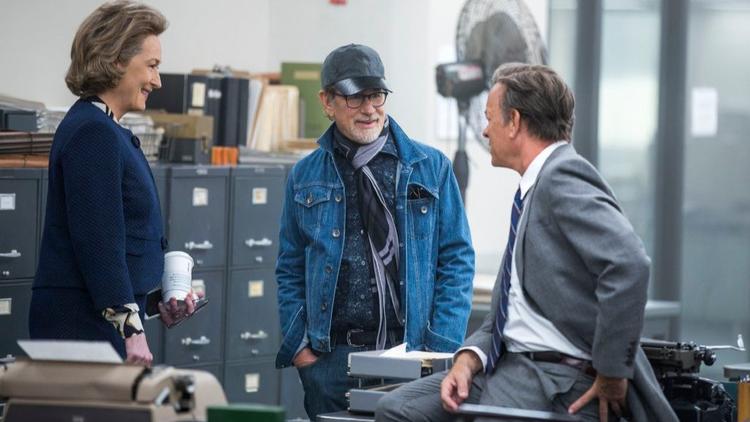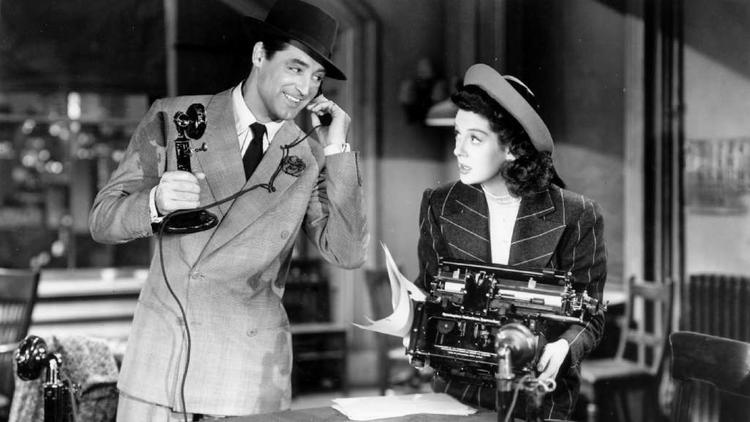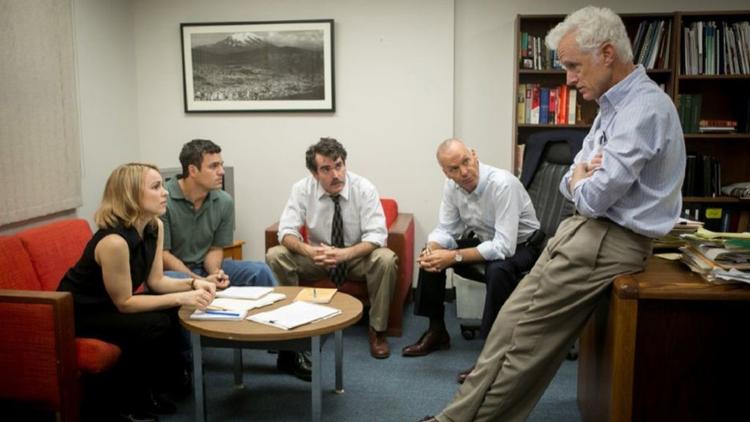Journalists in the Movies Present the Dogged Fight for Truth — As in "the Post" — As Well As the Scoundrels
By Lewis Beale
Journalism isn’t exactly held in high esteem these days. Yet despite a recent USA Today poll that found nearly two-thirds of Americans disapprove of the mainstream media, that hasn’t deterred Hollywood’s fascination with the Fourth Estate, particularly its print component. In 2016, “Spotlight” won the best picture Oscar for its portrayal of Boston Globe reporters uncovering a sex abuse scandal within the Catholic Church, and now director Steven Spielberg’s “The Post,” starring Tom Hanks and Meryl Streep, details the Washington Post’s decision to publish the Pentagon Papers, a secret Defense Department report showing that the Johnson administration (among others) systematically lied about its conduct of the Vietnam War. “I certainly hope that our movie makes people aware of the kind of effort that goes into searching for and seeking and printing the truth,” Spielberg has said. “This to me is a patriotic movie. I made this as a believer in the free press, in our 1st Amendment rights.” Spielberg’s film is just the latest example of a genre that has been a staple of Hollywood — for better or worse — for nearly a century. “Print journalists have been portrayed as heroes, as ink-stained wretches, as corrupt,” says John Maynard, director of programs for the Newseum in Washington, D.C. “The classic example is ‘All the President’s Men,’ the dogged determination of those reporters uncovering Watergate, shoe leather reporting, getting to the bottom of the story.” “Movies throughout their history have had an affectionate spot for 1st Amendment rights and journalists who serve the public welfare,” adds Joe Saltzman, who heads the Image of the Journalist in Popular Culture project at USC. “Many movies show the journalist performing in a way most journalists like to think of themselves: as the court of last resort for the underprivileged and underrepresented members of society.” Not that all portrayals of the press have been so high-minded. Particularly in the 1930s and ’40s, an interest in tabloid journalism led filmmakers to show aspects of the profession that ranged from scathing to screwball. “Five Star Final” (1931) features a sleazy tabloid editor played by Edward G. Robinson who resurrects a 20-year old scandal with tragic results. The film ends with a shot of the paper in a gutter “His Girl Friday” (1940) stars Cary Grant and Rosalind Russell as a wisecracking reporter and editor using every means at their disposal to cover the upcoming execution of a convicted murderer.
“There wasn’t the heavy reliance on the difficult complications of issues” in movies like these, says Andrea Heiss, director of the Arts-in-Depth Program at the Missouri School of Journalism. “There was maybe an attractive story line that doesn’t necessarily follow the reality of everyday stories printed in those decades.” One thing films like this did do, however, was create a series of journalism stereotypes that, inspired by silent movies and 19th century pulp novels, have endured for decades. Says Saltzman: “Publishers are still corrupt. Reporters still try to save the day. Editors still yell at everyone to get that story before another publication beats them to it. [Women] are still trying to be better than their male counterparts. And cub reporters are still the darlings of the journalism world because they always ask the questions the viewers want to know.” The perfect examples? Perry White, Lois Lane, Jimmy Olsen and that most famous of all reporters, Clark Kent, a.k.a. Superman, Of course, this doesn’t necessarily reflect reality — as seen in Liev Schreiber’s phlegmatic portrayal of “Spotlight’s” real-life editor Marty Baron. But at their finest, movies about the press shine a light on the doggedness of good reporting and the occasionally sleazy ways in which some writers and photographers will do anything, legal or not, to get a story. Early standouts in this respect are Billy Wilder’s “Ace in the Hole” (1951), a blisteringly cynical tale of a reporter (Kirk Douglas) manipulating a mine tragedy to enhance his reputation, and “Call Northside 777” (1948), the true story of a Chicago newspaperman (James Stewart) saving an innocent convict from a life in prison.
“Many newspapermen and women wrote some of the early to mid-20th century films about newspapers and telescoped years of experience into showing both the good (helping people in trouble) and some of the bad (alcoholism, do anything for a story) of the profession,” says Saltzman. In recent years, however, even though filmmakers do not shy from negative stories about the press — “Shattered Glass,” the 2003 film about journalistic fabricator Stephen Glass being a perfect example — they seem to particularly enjoy portraying the tenacity of investigative reporting, even though it is not inherently cinematic. “In films like ‘Spotlight’ and ‘All the President’s Men’ it’s not a glamorous thing,” says Maynard. “On the phone, driving to someone’s house, knocking on the door. Chasing a story, drama at every moment, obviously that’s not how it is. Even today it can be viewed as more glamorous than it really is.” But, adds Heiss, “one of the things filmmakers get right in these films is the incredible dedication of journalists to their profession and their code. They value accuracy, fairness, public service.” And there’s this. There’s never a bad time for a good “stop the presses” tale, especially one like “The Post” that holds a mirror up to contemporary society. “I thought this was an idea that felt more like 2017 than 1971,” Spielberg has said about his film. “I could not believe the similarities between today and what happened with the Nixon administration against their avowed enemies the New York Times and the Washington Post. I realized this was the only year to make this film.”
|
.
Any original material on these pages is copyright © BishopAccountability.org 2004. Reproduce freely with attribution.


